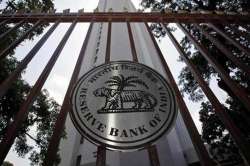Loan pricing: RBI moots market-based benchmark; may end banks’ discretion in fixing home loan rates
The move is aimed at bringing transparency in loan pricing and ensure that the benefits of change in policy rates are passed on to borrowers.

In a move that could end opacity in the mechanism that banks use to fix home loan rates and ensure that the changes in policy rates are transmitted to the end borrower, a study group constituted by the Reserve Bank of India has recommended linking floating rate loans to an external benchmark.
The move will place regular home loan or personal loan borrowers at par with big corporates when it comes to banks deciding on what interest rate they charge from those who avail the loan. The exercise in anything but transparent and gives banks the discretion to charge interest rates as they choose.
An RBI committee headed by Dr Janak Raj has suggested that interest rate on loans be linked to a market-based rate, which is common to all lenders. The suggestion, when implemented, will not only bring transparency in loan pricing, it will also ensure that changes in the policy rates by the RBI are transmitted to the borrower seamlessly and in full.
Banks have often been blamed for hesitating in passing on the benefits of cuts in repo rate – the rate at which banks borrow from the RBI – to consumers. Bank customers have for long complained that floating rate loans only move when interest rates rise, but not when they fall.
The RBI has, over the years, moved from the prime lending rate formula to the base rate formula and, most recently, the marginal cost lending rate formula.
However, each of these formulas have been based on benchmarks specific to each bank, most notably, the cost of deposits. In the RBI’s view, none of these formulas have allowed for complete transmission of policy rate changes.
"Arbitrariness in calculating the base rate and MCLR and spreads charged over them has undermined the integrity of the interest rate setting process,'' RBI said in a statement. ``The base rate and MCLR regime is also not in sync with global practices on pricing of bank loans."
On their part, banks have often used this as an excuse behind their failure in passing on the benefits of the change in rates to all borrowers simultaneously. Now, the RBI panel wants banks to raise deposits at floating rates to fix this anomaly.
Moreover, the report noted that most banks have been slow in migrating customers from the MCLR formula to the base rate which came into effect in 2010.
The study group has suggested three options which could be used as the base for loan pricing. These include a risk-free curve involving Treasury Bills; the Certificate of Deposit rate, which banks use to raise bulk deposits or the RBI’s benchmark repo rate, at which banks borrow from the central bank.
"We think that the internal benchmarks like the base rate or the MCLR, based on data, seem to give banks a very high amount of discretion lot of factors that are flexible for them to ensure that lending rates can be kept high even when monetary policy rates are going down an accommodative path," deputy governor Viral Acharya told reporters at a briefing after the monetary policy review on Wednesday.
Data from the RBI shows that, between December 2014 and October 2016, banks' Base Rate on an average reduced 0.61 percent when the policy rate was lowered by 1.75 percentage point.
The study group also suggested that interest rates resets be made on a quarterly basis instead of the current annual exercise.